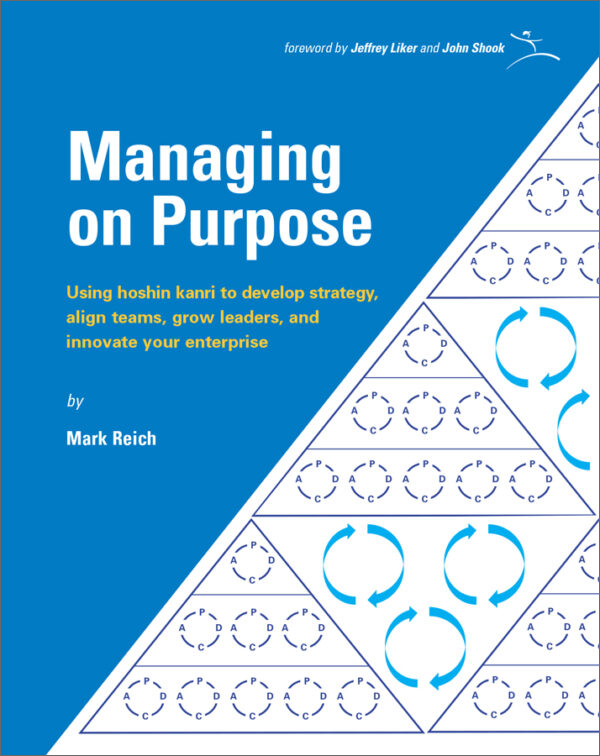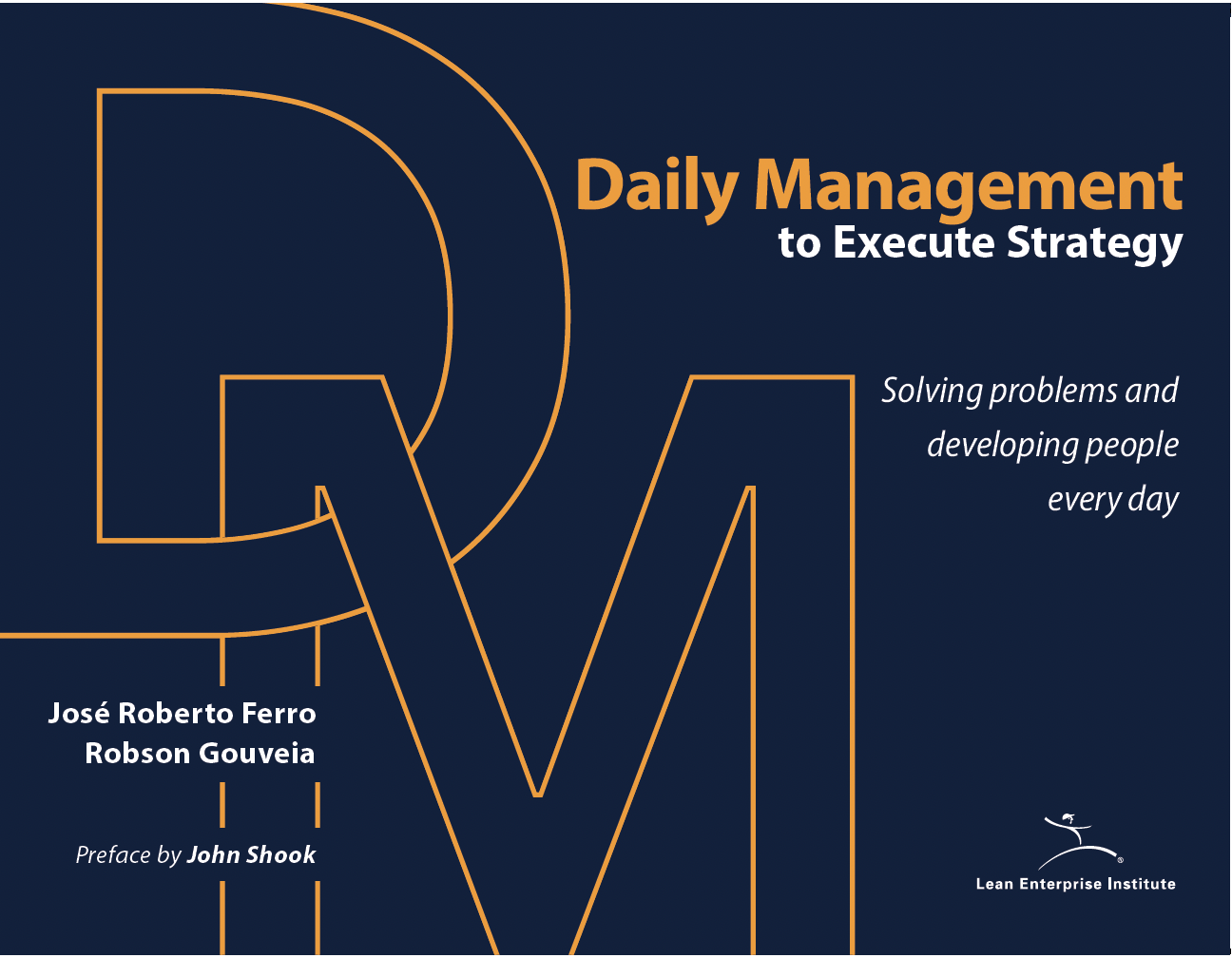I started writing my monthly e-letter in October of 2001 to speak to the worries of the Lean Community as the world economy slid into recession. So this month marks the end of one complete cycle — seven years of bust, boom, and bust — as the world enters a new recession.
When Dan Jones and I wrote Lean Thinking in 1996 we believed that the spread of lean production would damp the business cycle. Economists have long thought that at least half of the depth of recessions is due to companies working off their inventories and delaying the purchase of more materials from suppliers. Because lean firms have much lower inventories of raw materials, work in process, and finished goods in relation to their sales, we thought the adoption of lean inventory management would have a recession damping effect on the whole economy. And perhaps we were right. The 2001 recession was modest compared with the previous recession of 1991. If we really are right, maybe the current recession will be milder than we now fear.
In any case, we do face a major recession. I think of these events as a form of mura (variation), indeed as “mega mura” affecting the whole economy. By contrast, the aspect of mura that has drawn most of the attention of Lean Thinkers is internal variation within enterprises that is not due to long-term changes in external customer demand. Let’s call this “mini mura”.
Mura internal to the enterprise does include day-to-day variation in customer demand as long as it is not part of a long-term trend. It also includes gyrations in orders and operational performance progressing up a value stream — through production facilities and suppliers — that are caused by the internal dynamics of the process. These variations are the norm in modern production systems, leading to firefighting and muri (overburden of employees and technologies.) Toyota learned years ago to deal with this type of mura by creating basic stability in processes and introducing heijunka. The latter involves conscious leveling of short-term customer demand at some pacemaker point, with smoothed pull signals sent upstream from there.
Mega mura by contrast applies to large and lengthy shifts in total demand by external customers across the economy. Unfortunately, a boom in demand — caused in the current case by the surge in real estate prices fueled by low interest rates and relaxed lending standards — always leads to a bust. The sad part of these episodes — which are as old as market economies — is that they are almost never due to a fundamental change in consumer desires. Millions more Americans and Europeans didn’t suddenly want to own a home or buy a bigger home in the years after 2001. They presumably had always had these desires but lacked the money to act on them. Instead the boom was caused by manipulation of the financial system — through cheap credit, relaxed lending standards, and fanciful mechanisms for spreading lender risk — to pump up the housing market for the short-term benefit of those doing the pumping.
What we really need as an antidote is macro-economic heijunka (“mega heijunka”?) in which governments foster steady, moderate growth with no booms and no busts. And economic stabilization policies toward this end — fiscal and monetary — have been pursued by every modern government.
Unfortunately, we have learned that stable growth is hard to achieve as a political reality. The lure of making short-term windfalls through financial fiddles is very strong. And regulators, like generals preparing for the previous war, are always putting mechanisms in place to prevent the last crisis, not the next one. In my mind’s eye, the folks who thought up the credit default swaps, the collateralized debt obligations, and — my favorite — the synthesized collateralized debt obligations that fueled the recent boom, are now sailing their yachts on some tropical sea thinking up the next lucrative boom. And I wouldn’t bet against them.
Fortunately, the recessions that follow bubbles can be great spurs to lean transformations, the necessities that mother innovations. Toyota only decided to comprehensively embrace lean enterprise after the bust of the Japanese economy brought the company to the brink of bankruptcy in 1950. And in 1990-91 Lantech (Chapter 6 in Lean Thinking) and Wiremold (Chapter 7) embraced lean thinking as the economy foundered. A “creative crisis” was handed to managers ready to seize the opportunity and they made the most of it. So perhaps some good will come form the present recession as new lean enterprises emerge.
However, as the lean movement matures and more firms embrace lean enterprise, a different problem presents itself. A lean enterprise at its heart is a group of people (including downstream customers and upstream suppliers) who have learned together how to take initiatives to remove muda, (mini) mura, and muri while solving shared problems as they arise. It is this set of skills more than specific lean techniques that create the remarkable effectiveness of these organizations.
The problem with a recession is that it challenges lean organizations as they try to protect their problem-solving employees. It also challenges them as they try to defend the problem solving relationships built over time with downstream customers and upstream suppliers. The temptation in any crisis, of course, is to go back to point optimization in which it is every person and every firm for itself.
So how does a lean enterprise think about protecting itself and its people from the mega mura that is likely always to be with us? Here is a short list of ideas:
- Rethink recruitment policies to create a pool of entry-level temporaries who can be a buffer in severe downturns (defined as those where the survival of the enterprise dictates lay offs.) Gradually convert temporaries to permanent employees — who can be protected through practically any conceivable downturn — as they prove their fit with the organization’s problem solving methods and as they prove their commitment to the organization. The alternative is to fire people in some random way, often starting with higher-paid employees with more seniority. This sends the message that loyalty doesn’t count and squanders valuable team skills.
- Create company-wide bonuses for all employees, based on profitability, to adjust wages through the economic cycle and defend core employees from layoffs. Most firms still have all or nothing compensation for everyone except the executives on a bonus plan. This gives no flexibility in downturns, meaning compensation is constant for those who stay and zero for those who are let go. With variable compensation it is more likely that everyone can stay.
- As the lean transformation proceeds, convert physical inventories into cash but keep an inventory of cash to buffer the firm during the down cycle. From the standpoint of modern financial thinking, this seems sub-optimal. Shouldn’t all of the freed-up cash be put aggressively in play in the financial markets? But in the current crisis firms with stable cash reserves can keep new programs on schedule and will surge in the upturn as competitors who delay or cancel new projects fall behind.
I realize that these steps work best if taken well before the bubble bursts. So what do lean enterprises that have recently transformed themselves but not taken these steps do to get through the current crisis?
- Take back work from suppliers that are not going to be part of the core supply group going forward. This can defend jobs in the company and increase the level of understanding of what goes on in the supply base. And it need not disrupt relations with the remaining suppliers if it is clear that the firm will be working on a continuing basis with fewer but more talented suppliers in the future.
- Look at every product to ask how it can be offered more effectively. For example, at LEI we are asking hard questions about on-line learning and other methods to more cost-effectively deliver training.
- Look at every product and its value stream to see how it can be offered more efficiently by leaving out wasted steps and unnecessary expense. The hope, of course, is that careful targeting of waste can support price reductions to customers that will capture additional sales, so there will be no need to reduce the number of employees.
The very last thing to consider is the one thing managers seem to embrace most readily: cost cutting. This means leaving out steps and features that actually create value from the perspective of the customer and removing employees who are actually needed to get the job done right using the current process. The hope, usually wrong, is that the customer won’t notice.
This last expedient is the one I most fear, because it is likely to be justified in the name of “lean”. Every recession seems to produce a major cost-cutting campaign sold by traditional consultants. Their key promise is rapid financial payback, even within one quarter, and the only practical way to achieve this is layoffs. I truly hope that the recession of 2009 will not be known to history as the “lean” recession and everyone in the Lean Community should vow to avoid the cost cutting urge in their own organization.
To avoid the need for cost cutting, I hope that every would-be lean enterprise will assign someone responsibility for developing a “recession A3” that carefully reviews the background situation. The critical step in the A3 process will then be to develop a set of countermeasures that can protect the organization and its people through the current recession while laying the ground work for a sustainable lean enterprise in the future.
Best regards,
Jim
James P. Womack
Founder and Chairman
The Lean Enterprise Institute
P.S. John Shook’s new book, Managing to Learn, has been the most successful new offering in the history of the Lean Enterprise Institute. And it is timely for the current moment because John clearly explains the A3 process I have just recommended. Let me therefore repeat my advice that every organization develop an A3 for their “bubble trouble”, just as we are doing at LEI. It’s the best way to engage and align your people on the challenge of the recession.




